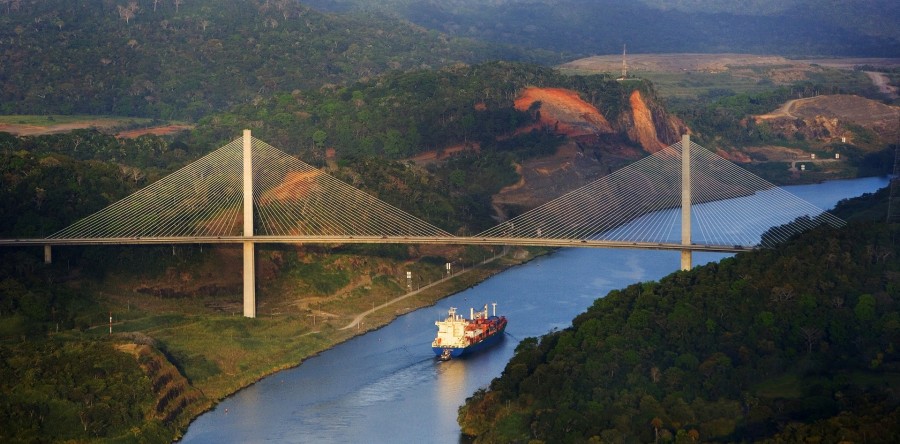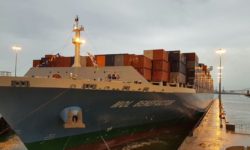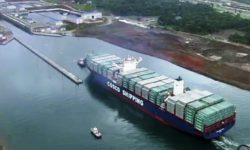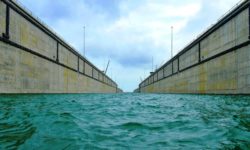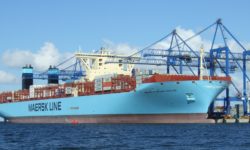The Panama Canal expansion will cater to 98% of the estimated fleet of container ships for the next four years (until 2018), the administrator of the Panama Canal Authority (ACP), Jorge L. Quijano, responded to questions on limits of the third set of locks to accommodate the new generation of Triple-E container ships of Maersk Line.
With a length of 400 meters, 59 meters wide (beam), 73 meters high and with a capacity for 18,000 containers, the Triple-E model is the world’s largest container ship. Designed under the criteria of economy of scale and environmentally friendly, the ships have high energy efficiency and serve the trade between Asia and Europe. The new Panama Canal locks can accommodate vessels of up to 336 meters in length.
Quijano said that currently there are over 5,000 container ships, of which 99% can transit the Panama Canal.
The administrator of the ACP received as a natural comment, the statement made by the head of Maersk Line Daily Operations, Keith Svendsen, who stated that “the construction of the Canal of Nicaragua seems to make sense”. According to Svendsen, Maersk supports infrastructure improvements because “they bring better opportunities for transport and, consequently, for trade.
“When we built container ships 20 years ago, they were designed according to the dimensions of the Panama Canal, but today ships can accommodate more than 4,500 containers that could be carried on larger vessels. Even after the Panama Canal expansion, larger ships will not fit there, “ said Svendsen.
But Quijano’s explanation makes sense. On one hand, these huge ships are having trouble being filled to capacity, and on the other, there is still no economic justification to engage in additional investment to meet the demand of a small number of vessels. Maersk ordered the construction of 20 Triple-E ships from Korean companies Daewoo Shipbuilding and Marine Engineering Co., to be delivered between 2013 and 2015.
“Besides,” said Quijano, “the third set of locks is designed so that a larger additional lock could be added on the side.
“In any investment,” he said, “we must determine the point at which the return begins to decrease (point of diminishing returns).” In his view, making an additional investment for a very low number of vessels with capacity for more than 14,000 twenty-foot containers (TEUs), plus additional water demand, this would not have been a wise decision.
However, Quijano did not rule out the possibility of the future construction of a fourth set of locks, “when the demand is there,” and justified. In this case, said a noted expert on the subject, we should look for additional sources of water outside the Canal basin.

